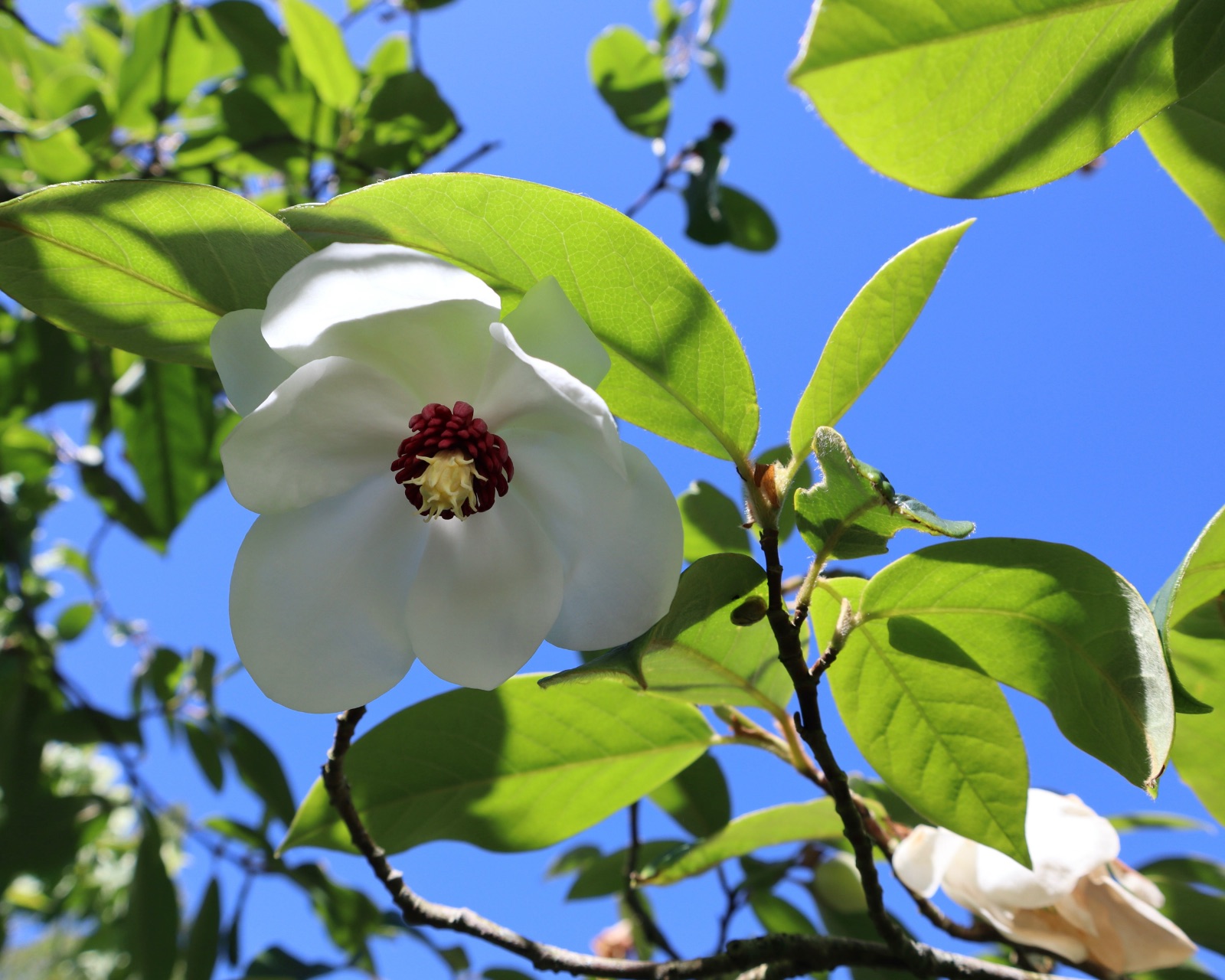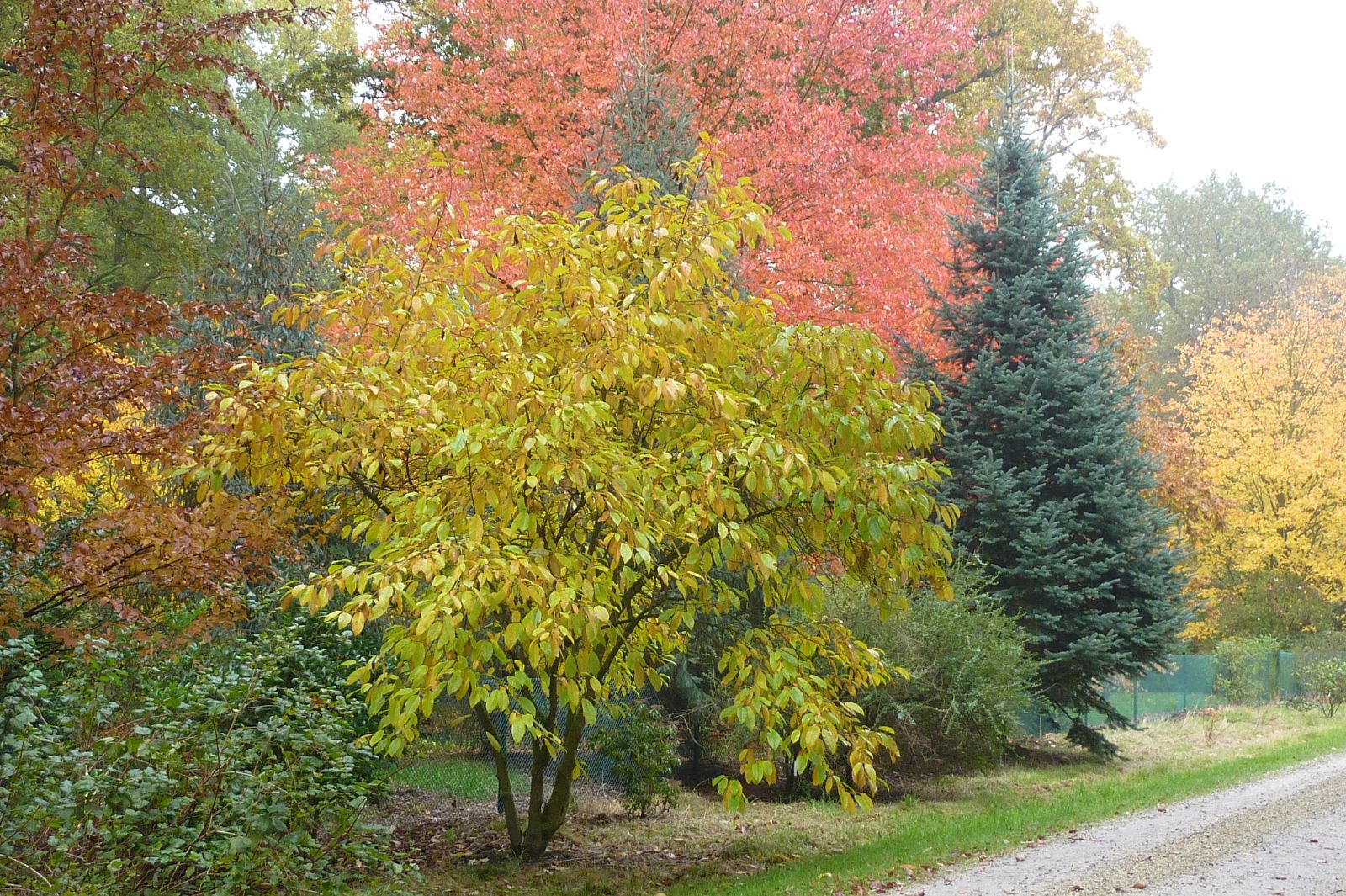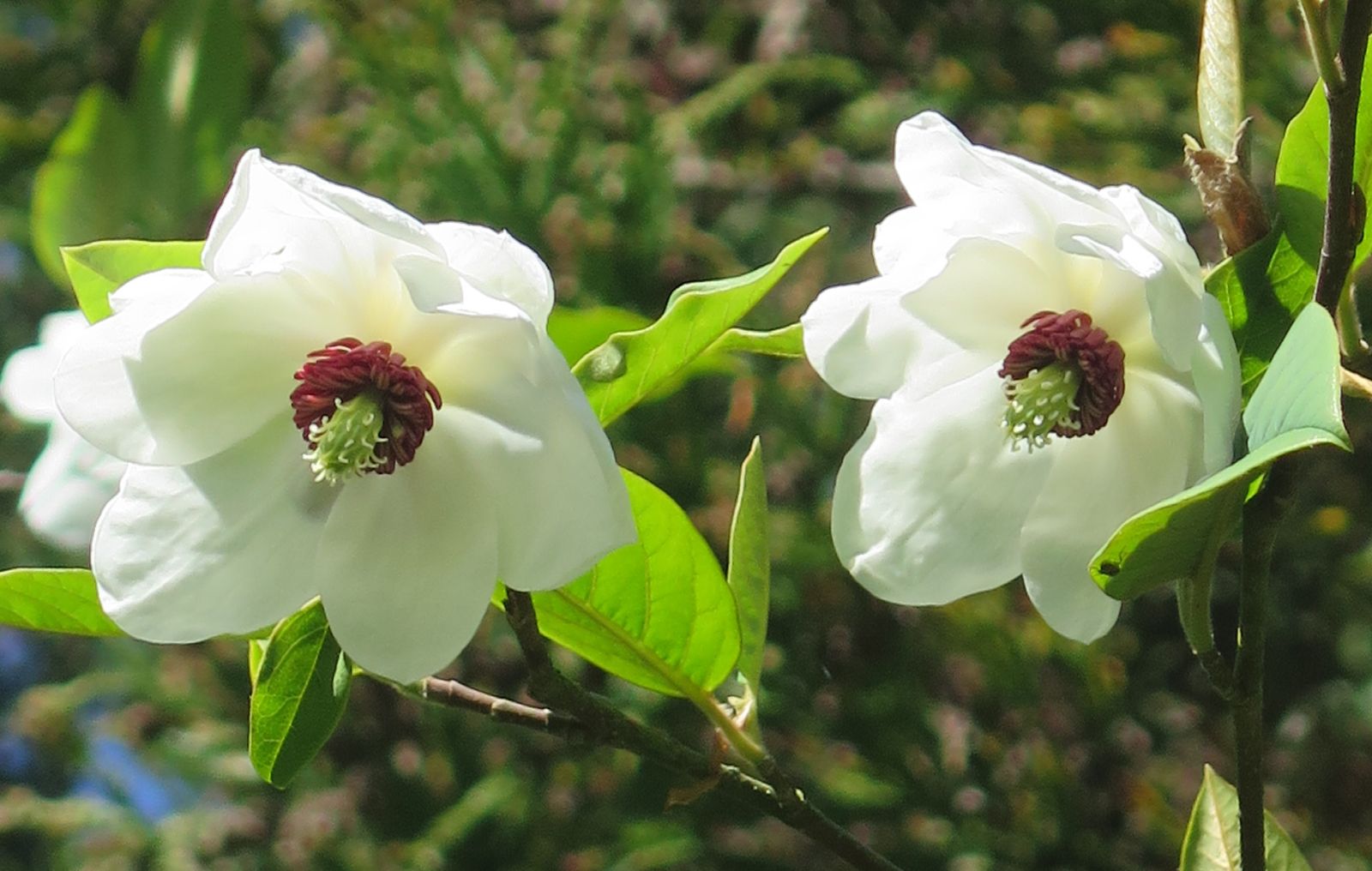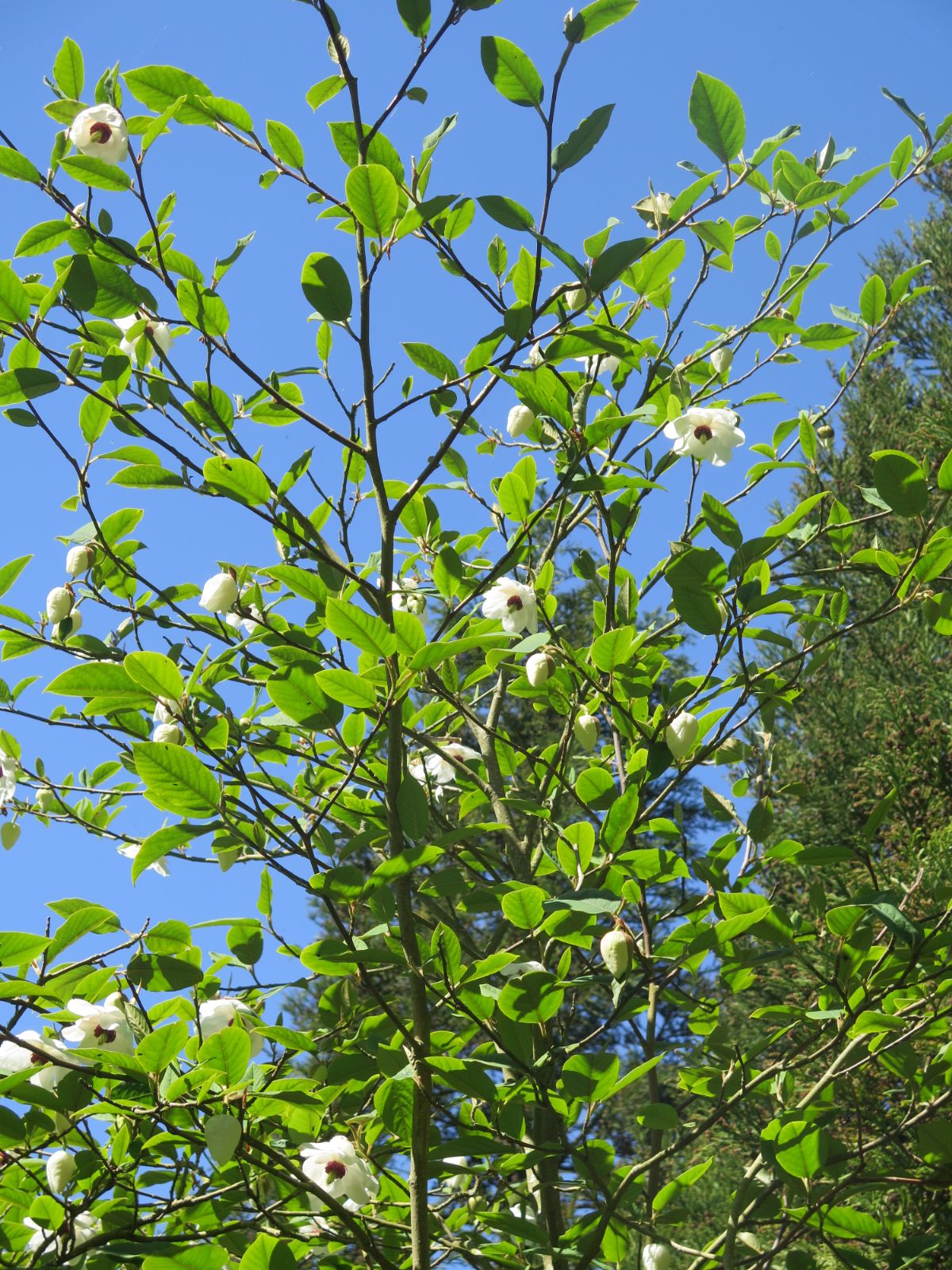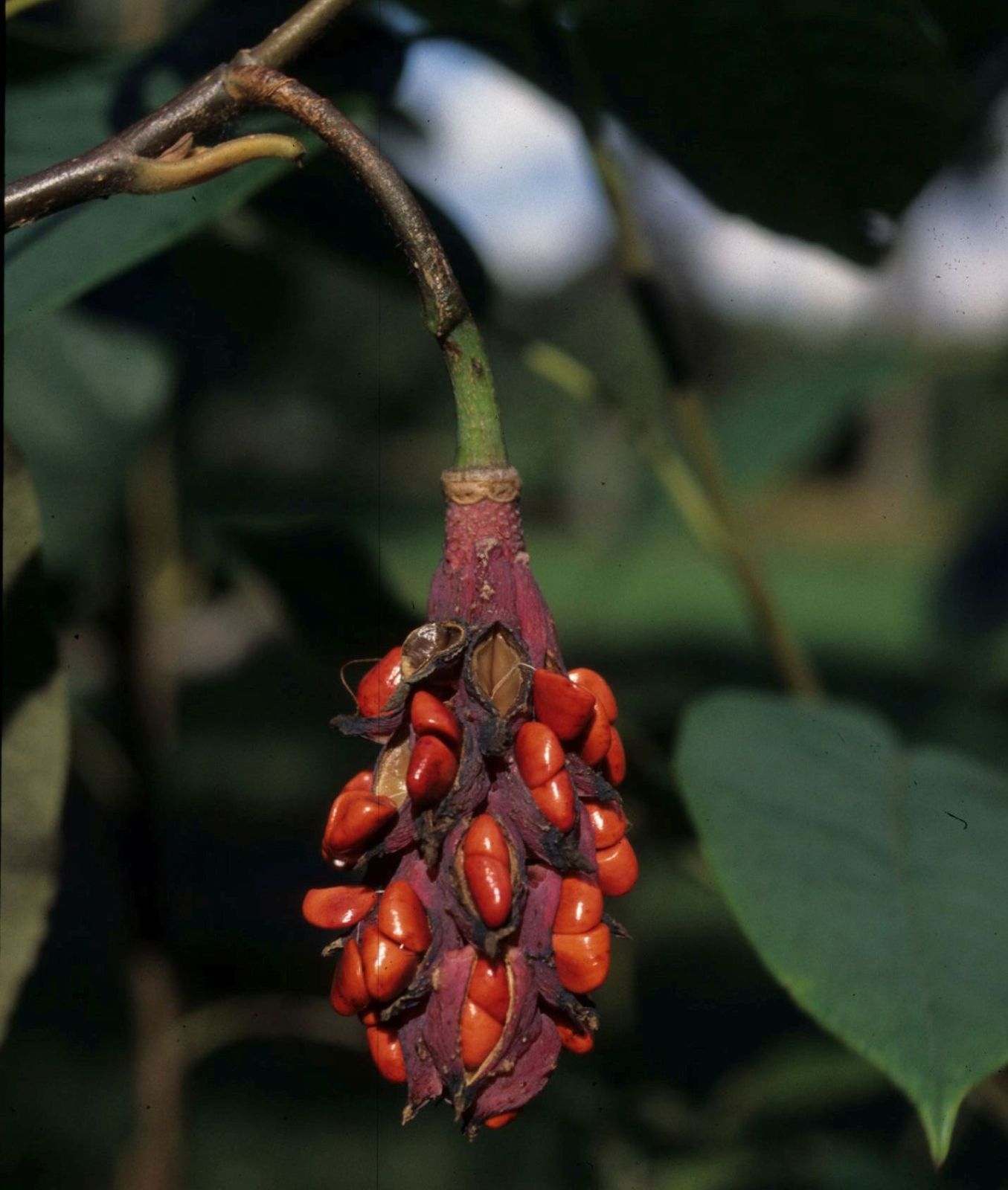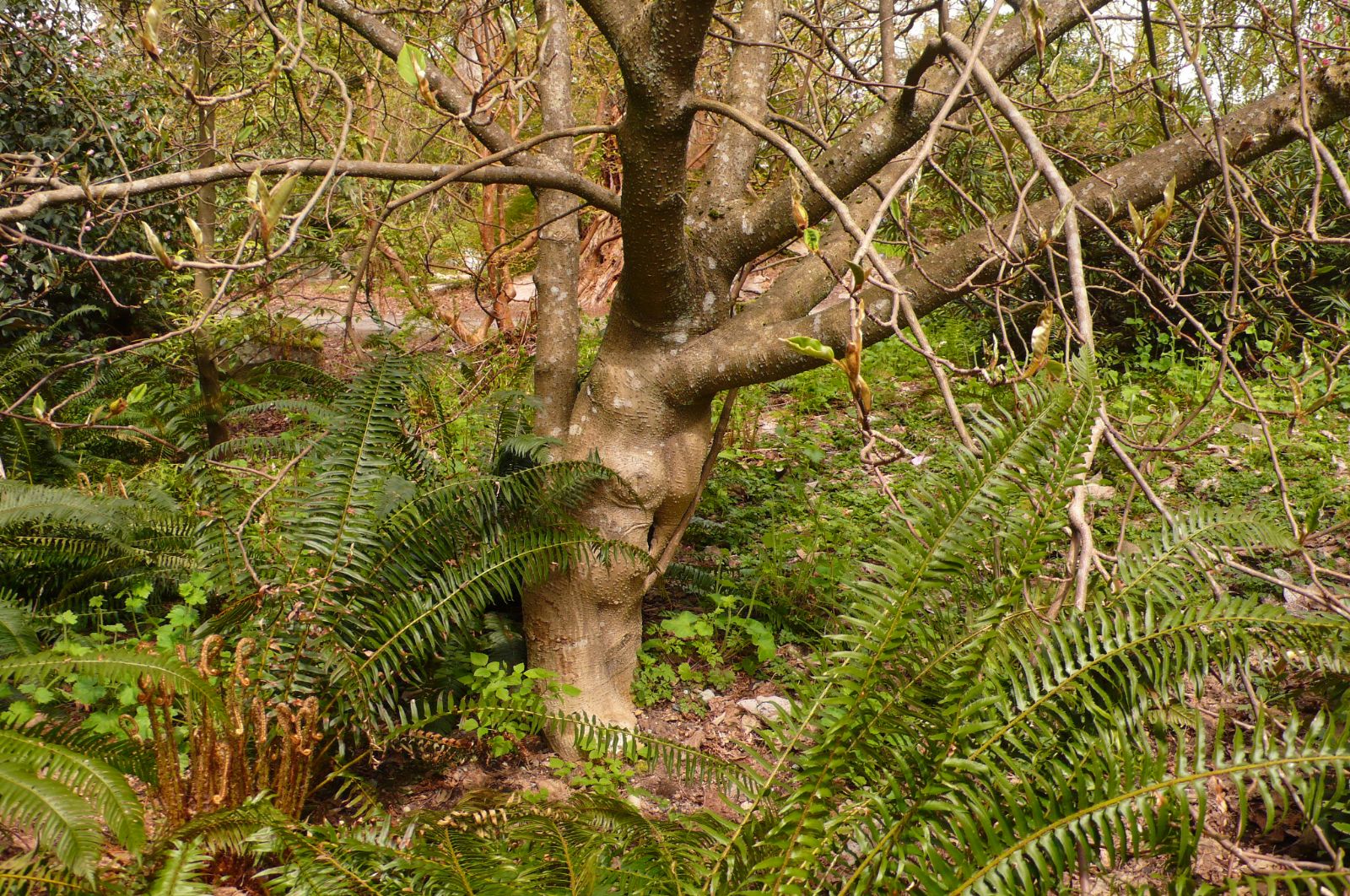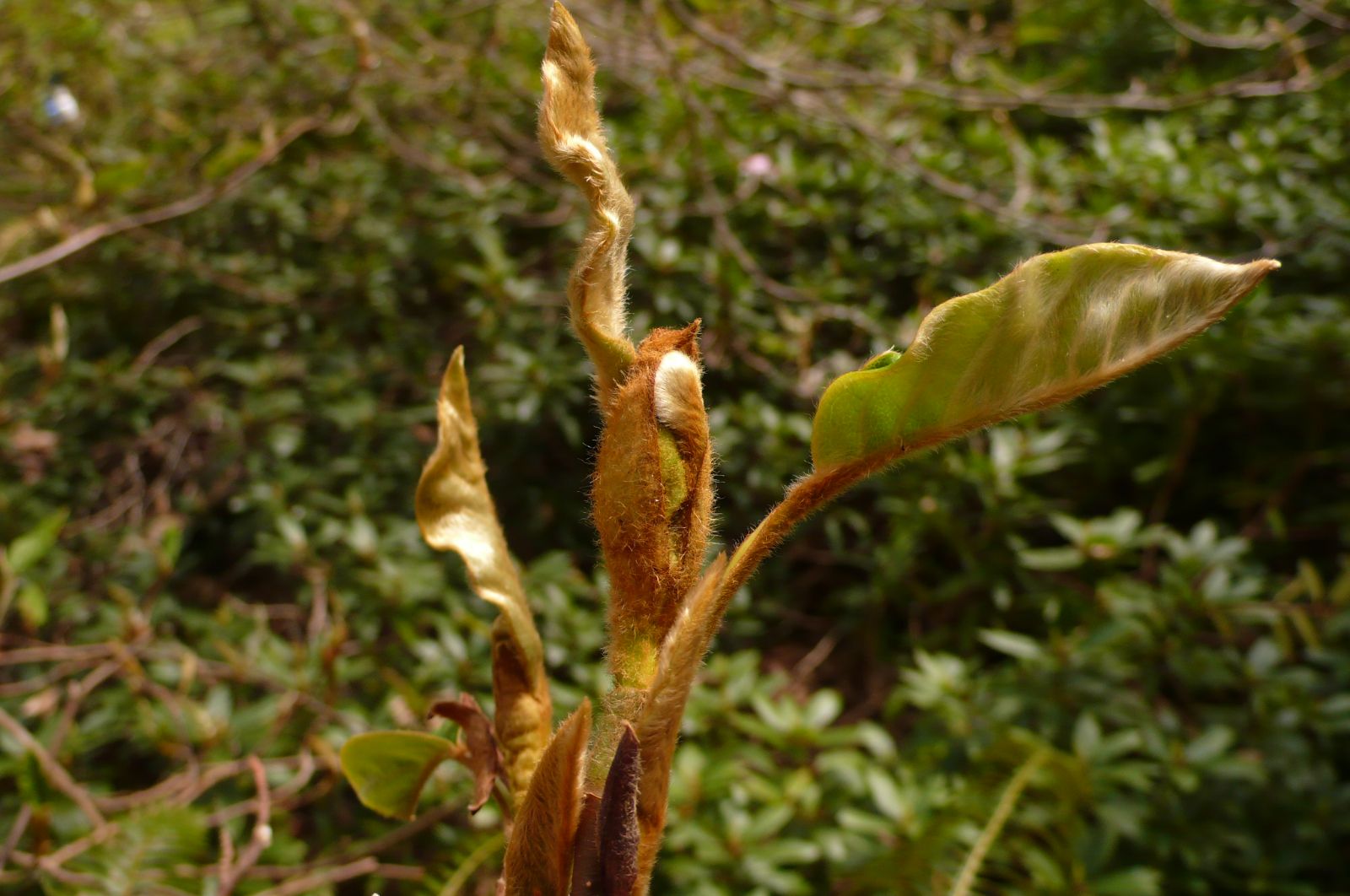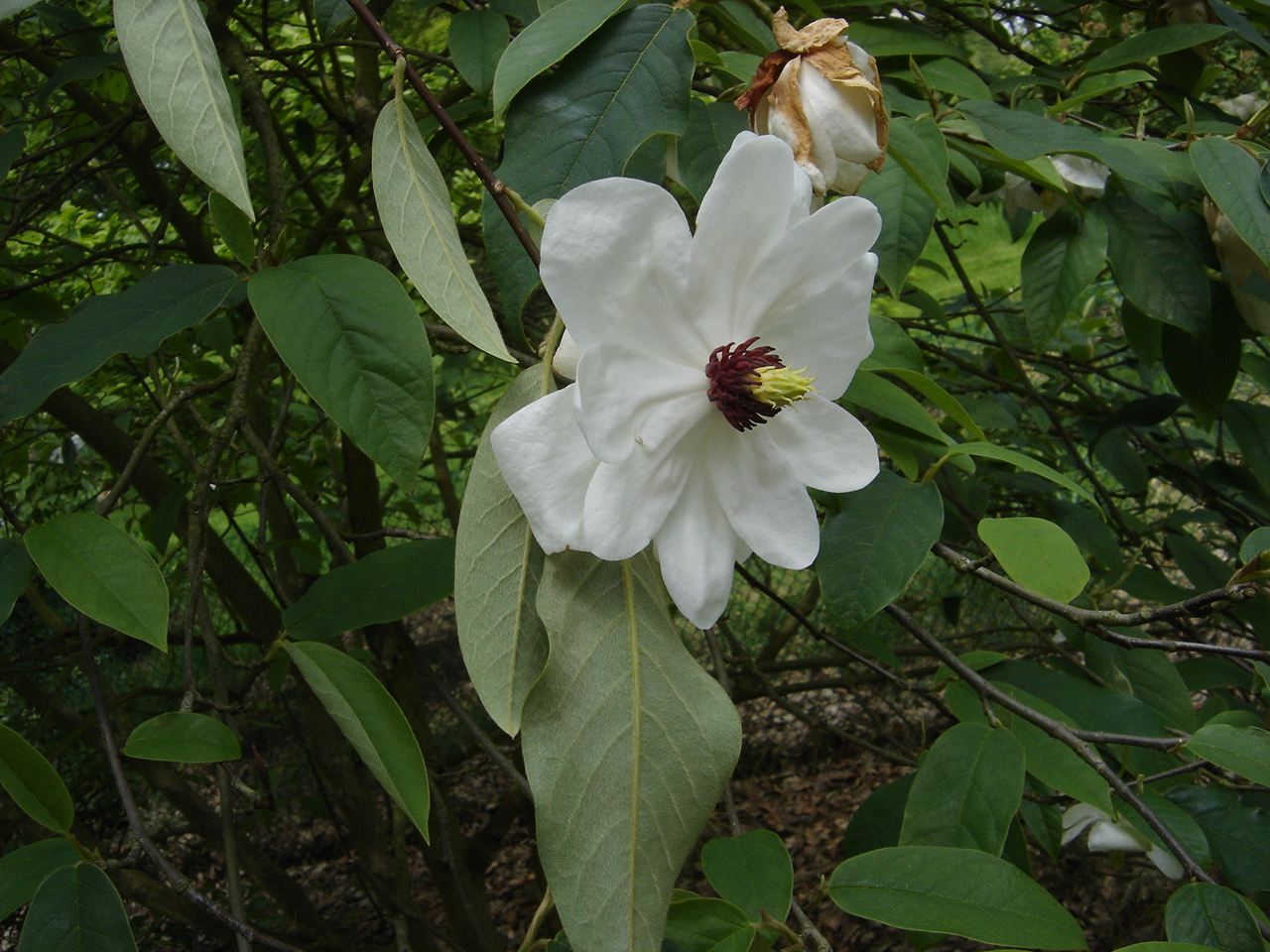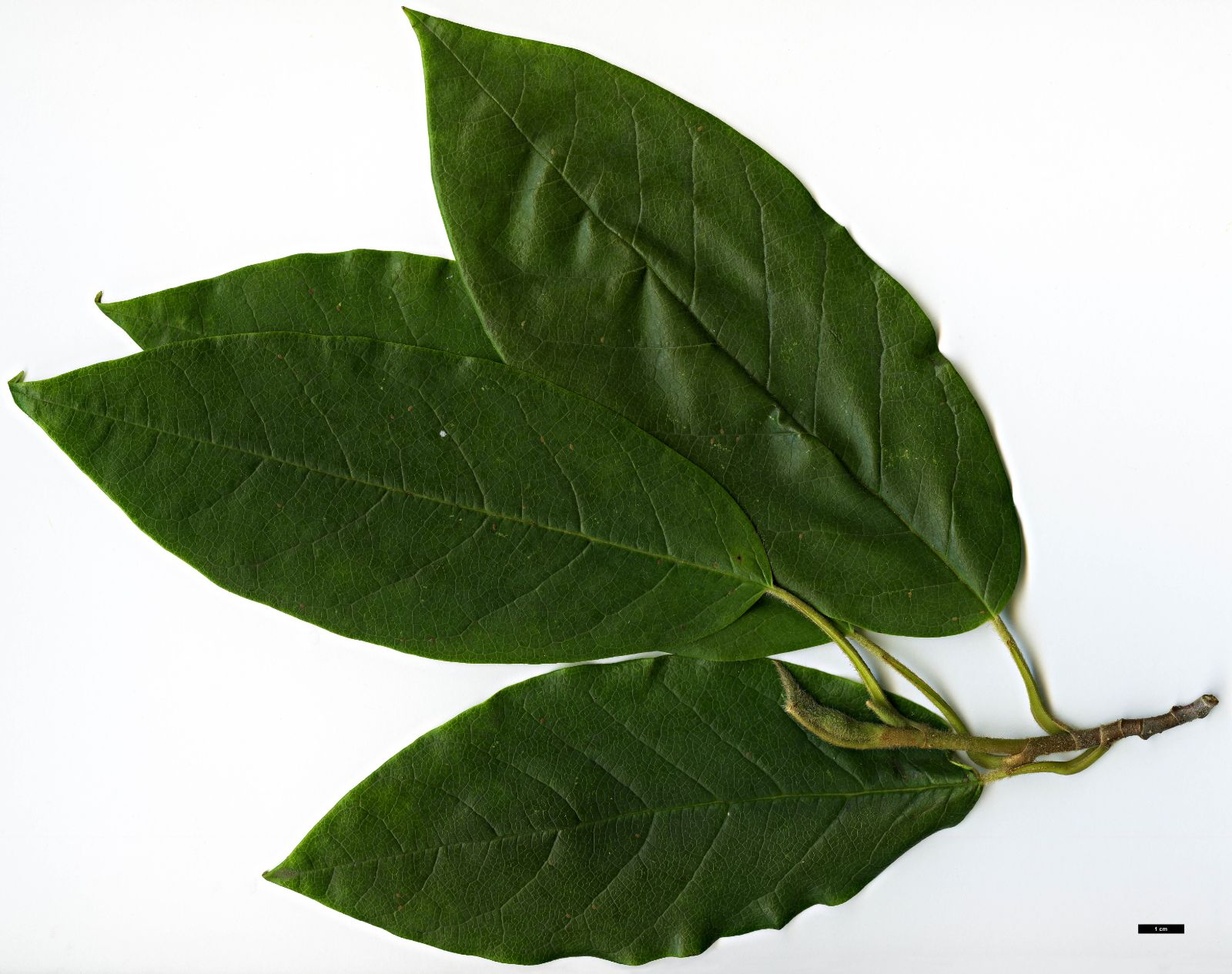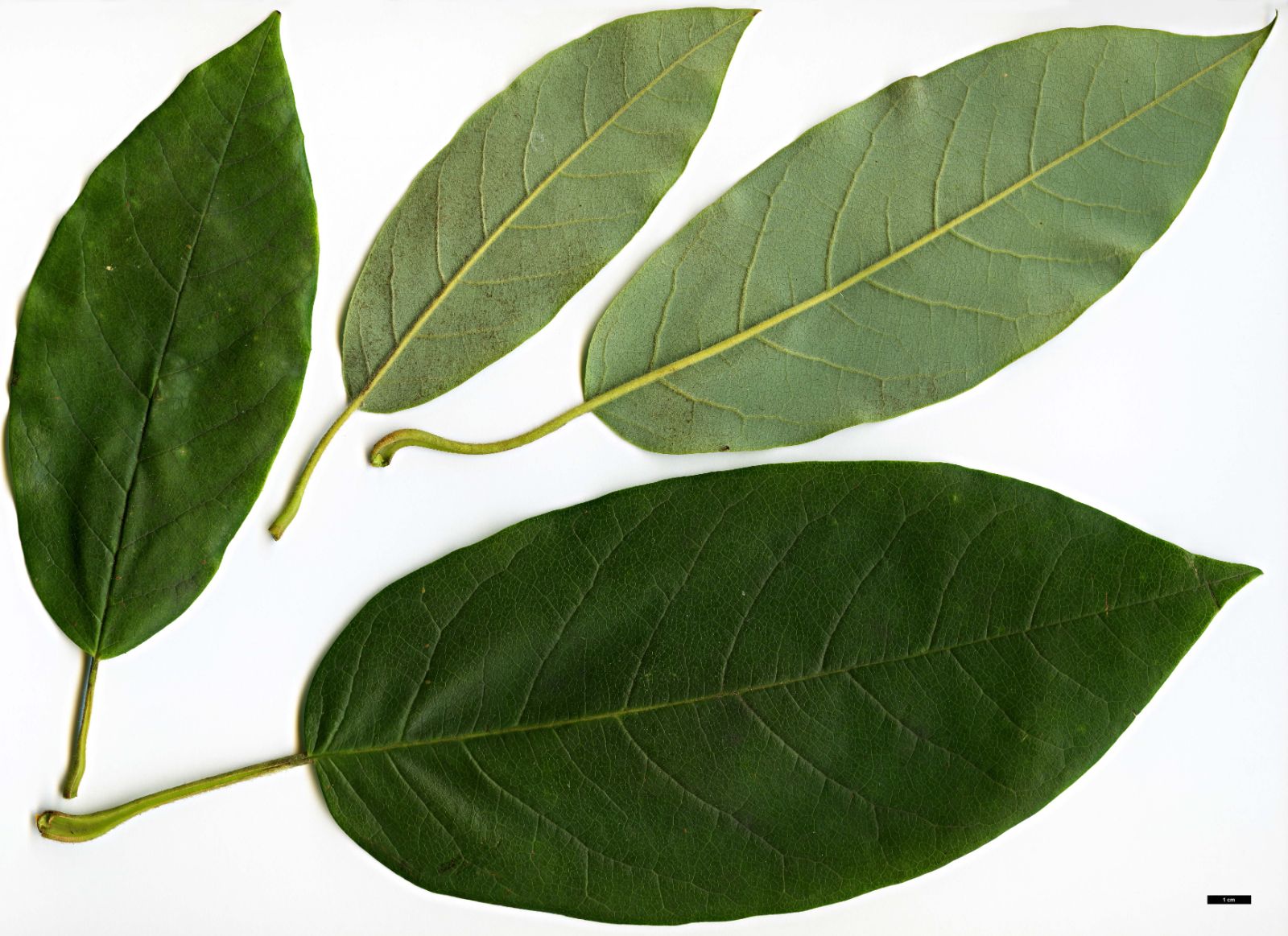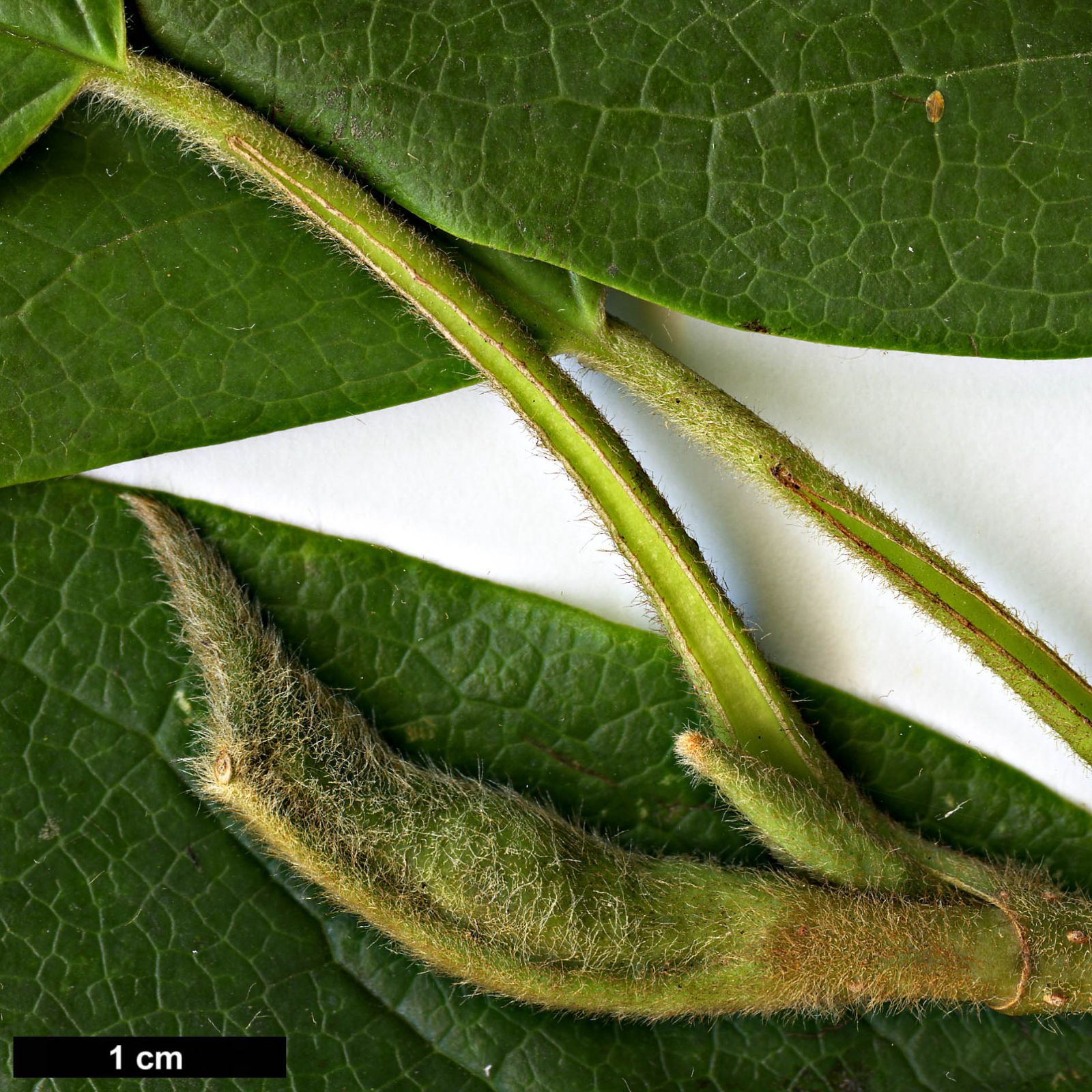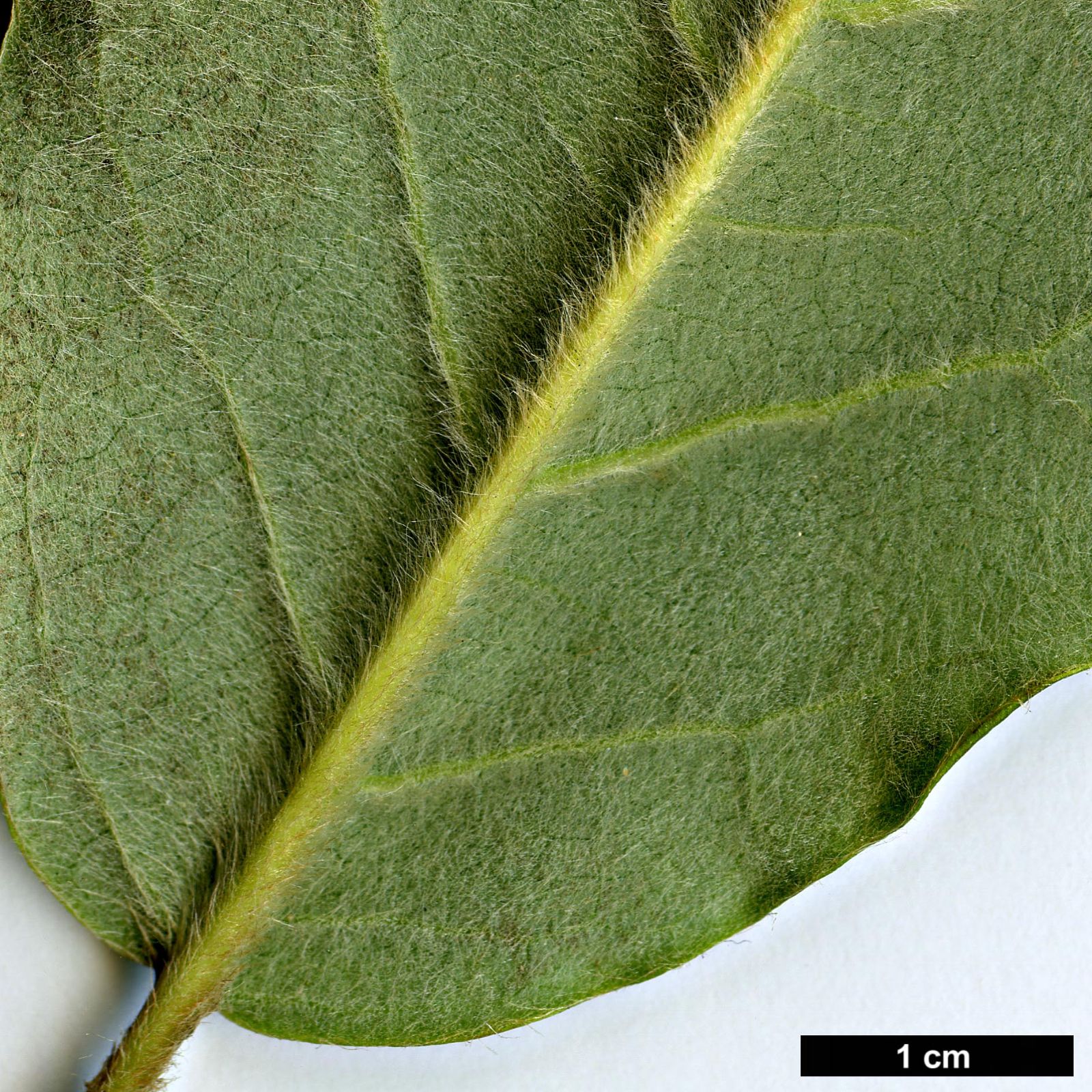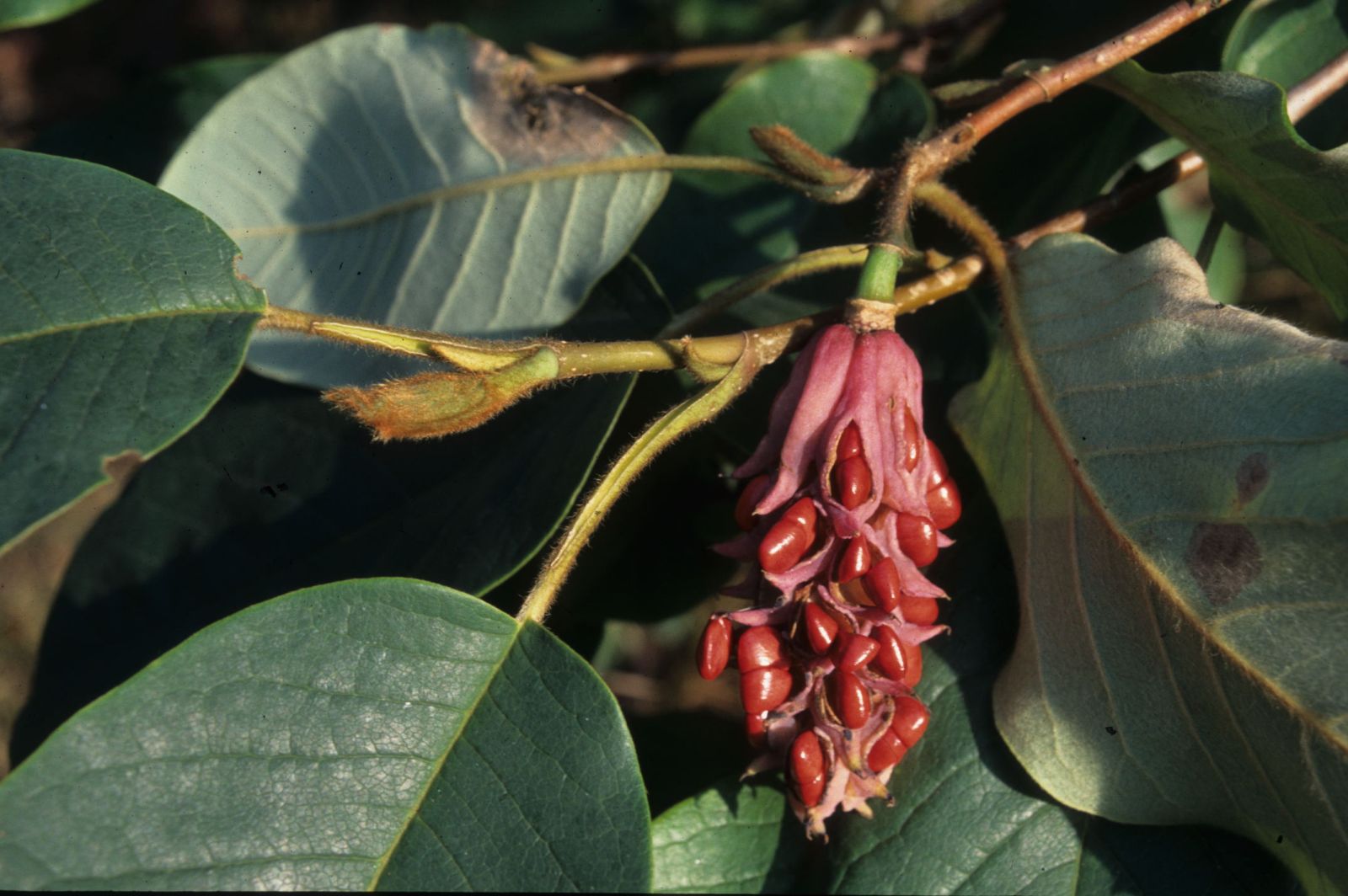Magnolia wilsonii
Sponsor
Kindly sponsored by
The Roy Overland Charitable Trust

Credits
Julian Sutton (2022)
Recommended citation
Sutton, J. (2022), 'Magnolia wilsonii' from the website Trees and Shrubs Online (treesandshrubsonline.
Genus
- Magnolia
- Section Oyama
Common Names
- Wilson Magnolia
- Xikang Yulan
- xi kang tian nü hua
Synonyms
- Magnolia nicholsoniana Rehd. & Wils.
- Magnolia parviflora var. wilsonii Fin. & Gagnep.
- Magnolia taliensis W. W. Sm.
- Magnolia wilsonii f. nicholsoniana (Rehd. & Wils.) Rehd.
- Magnolia wilsonii f. taliensis (W.W.Sm.) Rehd., nom. superfl.
- Oyama wilsonii (Finet & Gagnep.) N.H.Xia & C.Y.Wu
Infraspecifics
Other taxa in genus
- Magnolia acuminata
- Magnolia × alba
- Magnolia amabilis
- Magnolia amoena
- Magnolia aromatica
- Magnolia biondii
- Magnolia × brooklynensis
- Magnolia campbellii
- Magnolia cathcartii
- Magnolia cavaleriei
- Magnolia caveana
- Magnolia champaca
- Magnolia changhungtana
- Magnolia chapensis
- Magnolia compressa
- Magnolia conifera
- Magnolia Cultivars A
- Magnolia Cultivars B
- Magnolia Cultivars C
- Magnolia Cultivars D
- Magnolia Cultivars E
- Magnolia Cultivars F
- Magnolia Cultivars G
- Magnolia Cultivars H–I
- Magnolia Cultivars J
- Magnolia Cultivars K
- Magnolia Cultivars L
- Magnolia Cultivars M
- Magnolia Cultivars N–O
- Magnolia Cultivars P
- Magnolia Cultivars Q–R
- Magnolia Cultivars S
- Magnolia Cultivars T
- Magnolia Cultivars U–V
- Magnolia Cultivars W–Z
- Magnolia cylindrica
- Magnolia dandyi
- Magnolia dawsoniana
- Magnolia de Vos and Kosar hybrids
- Magnolia decidua
- Magnolia delavayi
- Magnolia denudata
- Magnolia doltsopa
- Magnolia duclouxii
- Magnolia ernestii
- Magnolia figo
- Magnolia floribunda
- Magnolia × foggii
- Magnolia fordiana
- Magnolia foveolata
- Magnolia fraseri
- Magnolia fulva
- Magnolia globosa
- Magnolia × gotoburgensis
- Magnolia grandiflora
- Magnolia grandis
- Magnolia Gresham hybrids
- Magnolia guangdongensis
- Magnolia hookeri
- Magnolia insignis
- Magnolia Jury hybrids
- Magnolia × kewensis
- Magnolia kobus
- Magnolia kwangtungensis
- Magnolia laevifolia
- Magnolia lanuginosa
- Magnolia leveilleana
- Magnolia liliiflora
- Magnolia × loebneri
- Magnolia lotungensis
- Magnolia macclurei
- Magnolia macrophylla
- Magnolia martini
- Magnolia maudiae
- Magnolia nitida
- Magnolia obovata
- Magnolia officinalis
- Magnolia opipara
- Magnolia × proctoriana
- Magnolia × pruhoniciana
- Magnolia rostrata
- Magnolia salicifolia
- Magnolia sapaensis
- Magnolia sargentiana
- Magnolia sieboldii
- Magnolia sinensis
- Magnolia sinica
- Magnolia sinostellata
- Magnolia × soulangeana
- Magnolia sprengeri
- Magnolia stellata
- Magnolia tamaulipana
- Magnolia × thomsoniana
- Magnolia tripetala
- Magnolia × veitchii
- Magnolia virginiana
- Magnolia × wieseneri
- Magnolia xinganensis
- Magnolia yunnanensis
- Magnolia yuyuanensis
- Magnolia zenii
Deciduous shrub or small tree, rarely to 8 m tall. Bark grey-brown, with conspicuous lenticels. First-year branchlets purplish-red, brown-villous at first, 2–3 mm in diameter. Leaf blade elliptic-ovate to oblong-ovate, 6.5–12(–20) × 3–5(–8) cm, papery, lower surface with appressed silvery-grey hairs, upper surface with yellowish hairs on midvein and secondary veins; base rounded or sometimes slightly cordate; apex acute to acuminate. Petiole (0.5–)1–3(–5) cm, densely brown villous; stipular scar ⅘–⅚ as long as petiole. Peduncle 1.5–5 cm, brown villous. Flowers appearing with the leaves, cup- to saucer-shaped, becoming pendent, 10–12 cm across, fragrant. Tepals 9(–12), white; outer 3 tepals broadly spoon-shaped to obovate, 4–6.5(–7.5) × 3–4.5(–5.5) cm, subequal to inner ones, base clawed, apex rounded. Stamens red to purple, 0.8–1.2 cm; filaments red, 1.5–2 mm; connective rounded or emarginate at apex; thecae distinct, 8–9 mm. Gynoecium green, ovoid-cylindric, 1.5–2 cm; carpels ~1 cm. Fruit initially red, purple when mature, terete, 6–10 × 2–3 cm, pendulous; mature carpels beaked. Seeds obovoid, ~6 mm. Flowering May–June, fruiting September–October (China). Diploid 2n=38. (Xia, Liu & Nooteboom 2008; Chen & Nooteboom 1993).
Distribution China Guizhou, C and W Sichuan, N Yunnan
Habitat Forests, 1900–3000 m.
USDA Hardiness Zone 6-9
RHS Hardiness Rating H6
Awards AGM
Conservation status Near threatened (NT)
This is perhaps the most familiar of the closely related species belonging to Section Oyama. Its fragrant white flowers with contrasting red stamens hang from the branchlets like saucers among the newly emerged leaves in late spring. It also makes a fine show in fruit.
The geographical range of M. wilsonii sits between those of M. globosa to the west and M. sinensis a little to the east, with M. sieboldii still further east: these taxa are not always easy to distinguish. M. wilsonii differs from M. globosa in its smaller leaves and the way flowers open fully; and from M. sieboldii and M. sinensis most usefully in the stipular scar being almost as long as the petiole (versus ½–⅔), but also in the dark purple-tinted bark of second-year branchlets, and in its leaves being widest below (versus above) the middle (Xia, Liu & Nooteboom 2008; Foster 2011).
It was first described scientifically as M. parviflora var. wilsonii (M. parviflora is now treated as M. sieboldii subsp. japonica) from specimens collected in W Sichuan by Ernest Wilson in 1904 (Wilson for Veitch 3137) and 1908 (W 1374). Rehder (in Sargent 1913) raised it to specific rank, considering it ‘a remarkably distinct species’. It is declining as a wild plant due to forest clearance for agriculture, replacement by forestry monocultures and harvesting for traditional Chinese medicine (IUCN 2021). Its bark is sometimes used as a substitute for M. officinalis, and like many magnolias flower buds are also used as remedies: McNamara (2010) suspected that a failure to find seed when collecting was sometimes due to bud harvesting earlier in the season.
This is usually a multistemmed, shrubby species both in gardens and in the wild; Wilson described it as a ‘straggling shrub’ (Howard 1980). If judiciously pruned from the outset it is possible to grow it as a small, single-stemmed tree to about 6 m in height, vigorous shoots growing up to 60 cm per year. The leaves are quite downy on the underside and are initially pale brown, later taking on a rather silvery appearance, but always maintaining a line of light brown hairs on the midrib. In Britain flowers are about 10 cm across, in May and June, while in western North America warmer temperatures lead to flowering in March and April, sometimes with flowers to 15 cm across. Stamen colour varies; while always essentially red, darker forms are especially attractive and worth seeking (Foster 2011). More or less double flowered plants sometimes turn up among garden seedlings (Treseder 1978). The cylindrical fruits are pinkish during early October, gradually fading to a dirty brown by mid-November. Treseder (1978) describes excellent autumn colour in a shaded Californian site, something rarely seen elsewhere.It usually sets copious seed, G.H. Johnstone (in Arnold-Forster 1948) going so far as suggesting that dead flowers might be removed to avoid weakening the plant! Seed germinates readily, and can flower in 5 years; it can be rooted from semi-ripe cuttings (Foster 2011). As for other oyamas, the ideal position would offer good light but with some shade in the hottest part of the day, and reasonable soil moisture during the growing season.
Wilson introduced seed twice from the type locality in W Sichuan The first batch (sent to the Veitch nursery in 1904 numbered 1587) apparently failed. A second lot sent to the Arnold Arboretum as W 1374A (probably collected 1908 but dates quoted – even by Wilson – vary a little) resulted in hundreds of seedlings which were distributed widely, including to the French nurseryman Léon Chenault. Wilson also collected a glabrescent variant elsewhere in W Sichuan during the same season under W 838, which became the basis of M. nicholsoniana (Sargent 1913), now sunk into synonymy with M. wilsonii. Wilson admitted to having confused the two and mixed the seed in with (presumably) W 1374A, and suggested that they would turn up among the widely distributed seedlings (Howard 1980). (To add further confusion, plants distributed by Chenault as M. nicholsoniana proved to be M. sinensis from W 1422). Another minor variant, once described as M. taliensis, was collected by George Forrest in the Cangshan, Yunnan, also has less hairy (and narrower) leaves. More recent collections of M. wilsonii include SICH 917 (1992, Sichuan) and several from NACPEC expeditions to Sichuan.
Large examples can be found in gardens across Britain and Ireland, although received identifications in Section Oyama should always be treated with great caution. Early seed raising may well have led to a mass of unrecognised hybrids among these very similar species, and there should be no shame in reserving judgement on the identity of any oyama. Records include trees of 8 m × 89 cm (2013) at Stagshaw Garden, Cumbria and 6 m × 75 cm (2014) at Trewithen, Cornwall (The Tree Register 2021). Original seedlings from wild collections are the safest bet for studying genuine, unhybridized material in gardens. For example, a well placed specimen from SICH 917 at Howick Hall, Northumberland draws attention to itself both in flower and fruit.
Hardy enough to be grown in the more maritime parts of continental Europe, it is recorded from several large Belgian collections (Plantcol 2021). It seems to be near the limits of its hardiness at Gothenburg, Sweden, where a 3–4 m shrub of nursery provenance flowered and fruited annually until it was killed by the severe winter of 1986–7, at around 40 years old (Nitzelius 1992); younger examples survive there (Gothenburg Botanical Garden 2021).
Unlike M. sieboldii, in North America M. wilsonii is more or less restricted by its hardiness to gardens on the Pacific seaboard, recorded in major collections from Vancouver (University of British Columbia 2021) south to the San Francisco Botanical Garden (Quarryhill Botanical Garden 2021). On the East Coast, the original and subsequent introductions to the Arnold Arboretum were lost, but several young trees from 2016 and 2017 NACPEC expeditions have been planted (Arnold Arboretum 2021).
As well as garden hybrids – recognized or not – within Section Oyama, M. wilsonii has been crossed with M. obovata to give M. × gotoburgensis.
'Highdownensis'
Synonyms / alternative names
Magnolia × highdownensis Dandy
More vigorous, with larger flowers 12.5–15 cm across, initially cup-shaped but then opening more fully and becoming pendent. The elliptic leaves, to 23 × 11 cm, have a hint of fawn hairs on midrib and petiole. It flowers over the same period as M. sieboldii, from late May to early July.
This is not a clonal cultivar, more a uniform strain which originated as some unlabelled seedlings given to Sir Frederick Stern of Highdown, Sussex, in 1927 by J.C. Williams of Caerhays Castle, Cornwall. When it first came into flower Stern thought it was M. globosa, but when exhibited at the 1937 Chelsea Flower Show it was considered a hybrid between M. sinensis and M. wilsonii: it certainly falls between the usual appearance of these species in gardens. Dandy’s nothospecies M. × highdownensis covered all hybrids between these taxa. However, Steven Spongberg (1976) regarded it as pure M. wilsonii, falling within its range of variation, and resembling some specimens of M. wilsonii collected in China.
When raised from seed the resulting plants are uniform: both seedlings and vegetatively propagated plants under this name are frequent in gardens of southern and western Britain.

